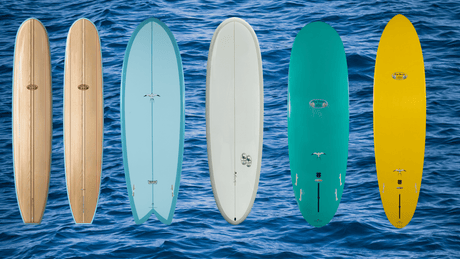Surfing, with its majestic waves and relaxed atmosphere, is attracting more and more enthusiasts around the world. If you are about to embark on this exciting aquatic adventure, here are 10 essential tips to start surfing without getting discouraged.
1.Choose the right board
 The choice of the board is crucial for beginners. Opt for a wide and stable board, ideal for learning to paddle and maintain balance. Foam boards are ideal for starting out, as they are more forgiving during falls.
The choice of the board is crucial for beginners. Opt for a wide and stable board, ideal for learning to paddle and maintain balance. Foam boards are ideal for starting out, as they are more forgiving during falls.
Find our selection of beginner/intermediate boards here!
Don't be fooled by the desire to quickly switch to a shorter board! As you progress, you feel the need to move to more performance-oriented boards like shortboards, but this is the best way to slow down your progress. The problem is simple: you will have more difficulty paddling, so it will be harder to catch waves. If you do catch them, you will be less stable and more likely to fall. In the end, you'll spend the session struggling in the water and feel like you've regressed.
2. Equip yourself properly
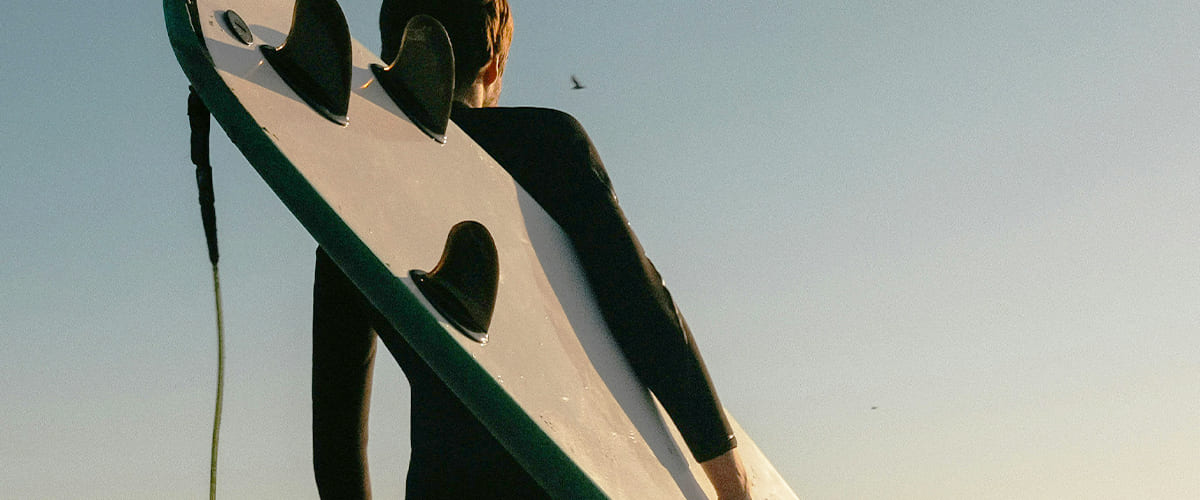 Outre la planche, il est essentiel de s'équiper avec les bons accessoires pour surfer dans les meilleures conditions. Parmi eux, on compte la combinaison, qui assure votre confort thermique dans l'eau, le leash, cet élastique qui relie votre pied à la planche pour ne pas la perdre en cas de chute et les dérives, ailerons fixés sous la planche de surf qui assurent la stabilité et la maniabilité.
Outre la planche, il est essentiel de s'équiper avec les bons accessoires pour surfer dans les meilleures conditions. Parmi eux, on compte la combinaison, qui assure votre confort thermique dans l'eau, le leash, cet élastique qui relie votre pied à la planche pour ne pas la perdre en cas de chute et les dérives, ailerons fixés sous la planche de surf qui assurent la stabilité et la maniabilité.
Combination point
Some elements to consider when choosing your wetsuit:
- Water temperature: opt for a full wetsuit if the water is cold, and a shorty for warmer waters.
- The quality of the neoprene: the more flexible and thick it is, the better you will be protected from the cold and irritations.
- Size: choose a well-fitting wetsuit to prevent water entry and ensure your comfort of movement.
Find all our tips for choosing the right wetsuit here!
Drift point
They play a crucial role in the practice of surfing and have a significant impact on the surfer's stability, maneuverability, and overall performance. Beginners particularly appreciate this increased stability, which makes it easier to learn the basic movements.
Direction and control: The fins allow the surfer to control the direction of their board. By tilting the board to one side or the other, the surfer can influence the board's trajectory and adjust its orientation relative to the wave.
Handling: The number, size, and shape of the fins affect the board's handling. Surfers can choose fin configurations based on their surfing style and wave conditions. Smaller fins will favor increased maneuverability, ideal for quick turns and dynamic moves.
Adaptability to conditions: By adjusting the fins according to the waves, surfers can optimize their performance. Longer fins can offer better grip in more powerful waves, while shorter fins are preferable in smaller conditions.
3. Take a course with an instructor
 To start surfing well, nothing beats the support of a professional. An instructor will teach you the basics of surfing, as well as the safety rules to follow in the water. They will also guide you step by step in catching waves.
To start surfing well, nothing beats the support of a professional. An instructor will teach you the basics of surfing, as well as the safety rules to follow in the water. They will also guide you step by step in catching waves.
Familiarize yourself with basic safety rules, such as how to fall properly to avoid injuries, knowledge of tides and currents, as well as understanding beginner-only surfing areas. Respect other surfers and water rules. Learn surfing etiquette to avoid conflicts and contribute to an enjoyable experience for everyone.
As on the road, there are priority rules on the water to ensure sessions are safe and enjoyable! Ideally, you should always observe the other surfers in the water before catching a wave to position yourself optimally and avoid disturbing anyone.
4. Warm up before each session
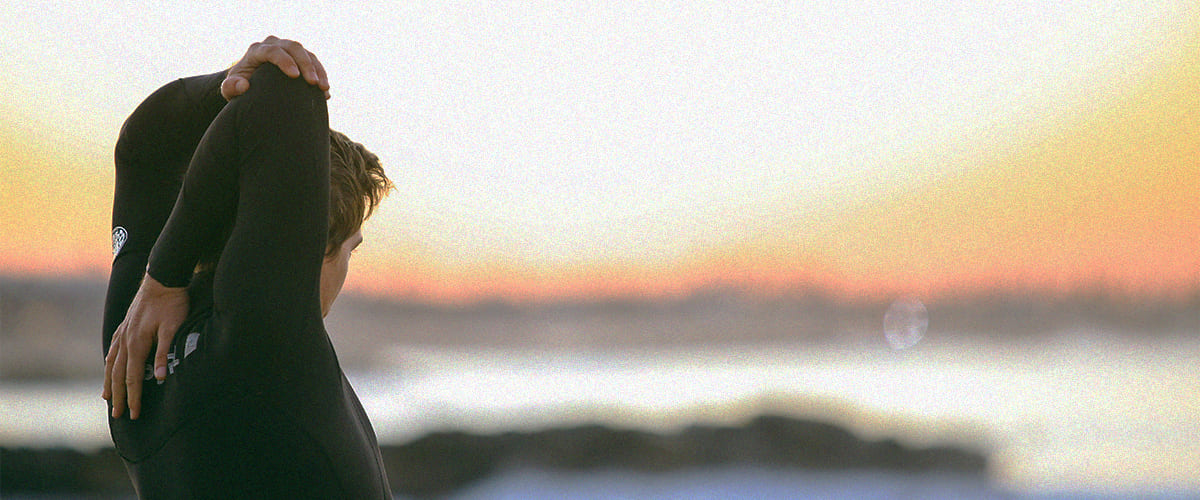 Surfing is a physically demanding sport that engages the entire body. Therefore, it is essential to perform a full warm-up before hitting the water, in order to prevent injuries and optimize your performance.
Surfing is a physically demanding sport that engages the entire body. Therefore, it is essential to perform a full warm-up before hitting the water, in order to prevent injuries and optimize your performance.
Some warm-up exercises to do:
- Dynamic stretches (joint rotations).
- Core strengthening of the torso and arm circles to prepare the shoulders.
- Squats or lunges to strengthen the legs
5. Learn to read the waves and weather conditions
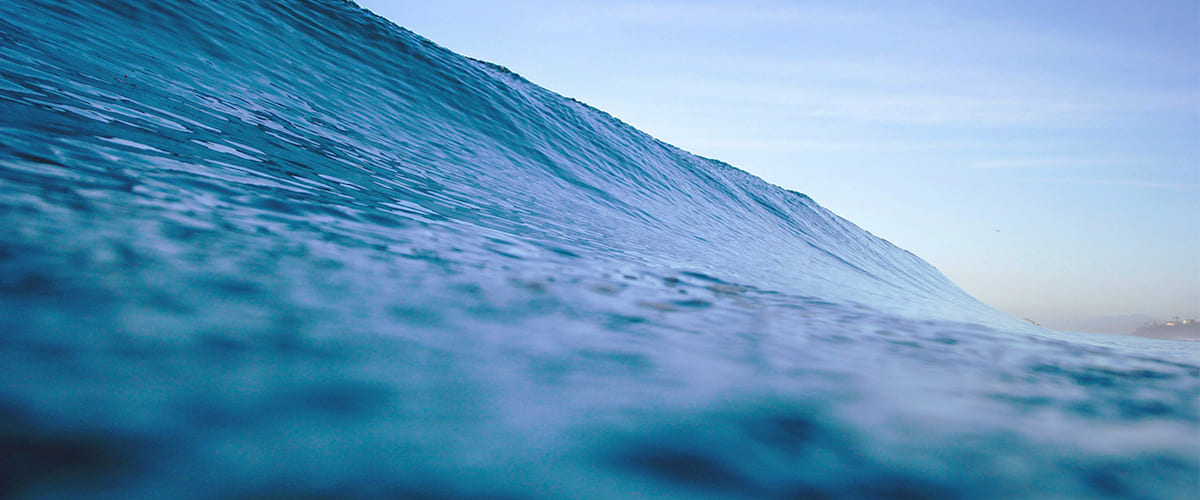 Knowing how to anticipate and understand the waves is essential for progressing in surfing. Carefully observe the currents, tides, and opportunities offered by the different waves in order to choose the best board and the right approach.
Knowing how to anticipate and understand the waves is essential for progressing in surfing. Carefully observe the currents, tides, and opportunities offered by the different waves in order to choose the best board and the right approach.
Start with smaller and less powerful waves. Learning to surf on waves suited to your skill level will allow you to progress with confidence. Surfing is a delicate balance between stepping out of your comfort zone and knowing your limits. Rushing too quickly into waves that are too powerful or rough conditions is the best way to get a good scare.
6. Position yourself correctly on your board
 An adequate position on the board is essential to maintain balance and successfully catch the waves. Your chest should be aligned with the middle of the board, and your feet should touch its rear.
An adequate position on the board is essential to maintain balance and successfully catch the waves. Your chest should be aligned with the middle of the board, and your feet should touch its rear.
Don't hesitate to adjust your weight on the board when catching your wave. A board that noses down indicates that you are too far forward. Sometimes, simply lifting your chest slightly is enough to lighten the front of the board and engage with the wave. Conversely, when you feel the wave isn't carrying you, sometimes just shifting your weight forward by pressing your chest onto the board is enough. It all comes down to feeling; the more you practice, the more your positioning will become natural.
7. Master the oar
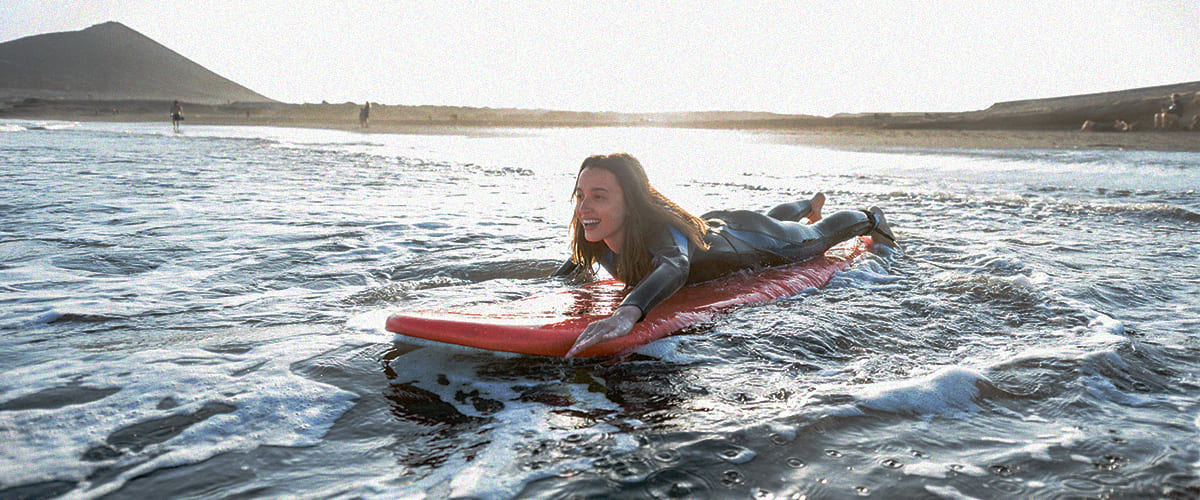 Mastering the art of paddling is essential for entering the waves. To acquire an effective paddling technique, think about coordinating your arm movements and ensure that the support is firmly placed under your shoulders. Remember that a good, precise, and powerful movement is much better than a fast paddle!
Mastering the art of paddling is essential for entering the waves. To acquire an effective paddling technique, think about coordinating your arm movements and ensure that the support is firmly placed under your shoulders. Remember that a good, precise, and powerful movement is much better than a fast paddle!
8. Work on your take-off and your balance
 The take-off, or standing up on the board, is probably the most difficult step for beginners. It is a quick movement that requires strength and balance. Don't hesitate to practice on the beach before trying your luck in the water.
The take-off, or standing up on the board, is probably the most difficult step for beginners. It is a quick movement that requires strength and balance. Don't hesitate to practice on the beach before trying your luck in the water.
Balance is the key to surfing. Practice balance exercises outside of the water to strengthen your muscles and improve your stability on the board.
9. Watch the experienced surfers
 Observe their technique, their posture, and the way they navigate through the waves. This can provide valuable insights to improve your own style.
Observe their technique, their posture, and the way they navigate through the waves. This can provide valuable insights to improve your own style.
10. Have fun and enjoy the experience
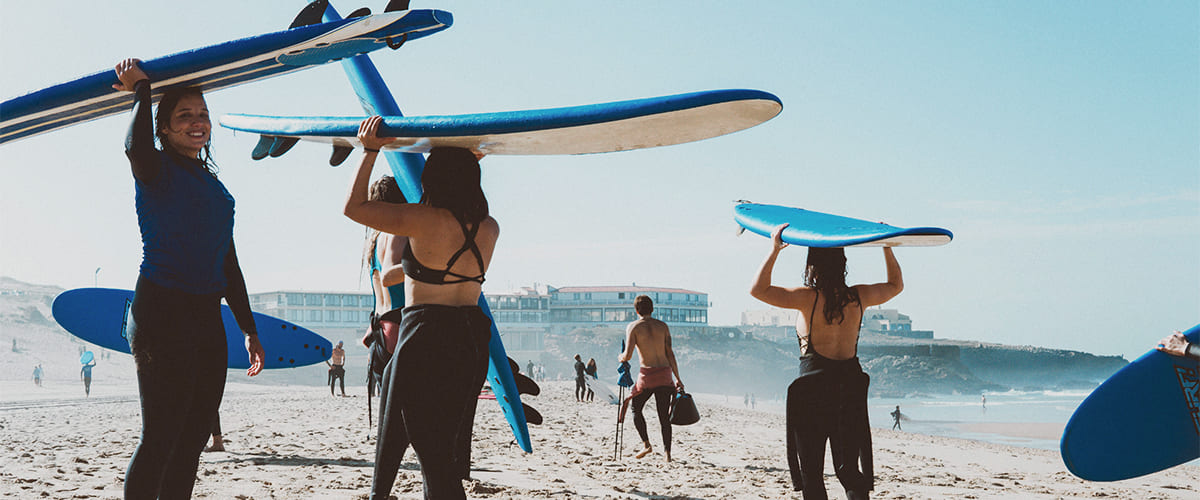 Surfing can be an intimidating challenge, but it is important not to get discouraged by the difficulties encountered. Try new maneuvers, accept falls, and celebrate every progress made.
Surfing can be an intimidating challenge, but it is important not to get discouraged by the difficulties encountered. Try new maneuvers, accept falls, and celebrate every progress made.
Finally, don't forget that surfing is above all a leisure activity and a means of escape. Keep in mind the pleasure of gliding on the waves and sharing friendly moments with other surfers.
Point bonus
The real secret to progressing in surfing: consistency and perseverance.
Regular practice is essential to progress in surfing. The more time you spend on the board, the more you will develop your skills and confidence. Surfing can be difficult at first, but perseverance is key. Don't be discouraged by falls and challenges. Every session is a learning opportunity.
By following these tips, you can approach your surfing adventure with confidence and enthusiasm. Surfing is a unique experience that offers not only physical benefits but also a deep connection with the ocean. So, grab your board, dive into the water, and let yourself be carried away by the magic of surfing.





